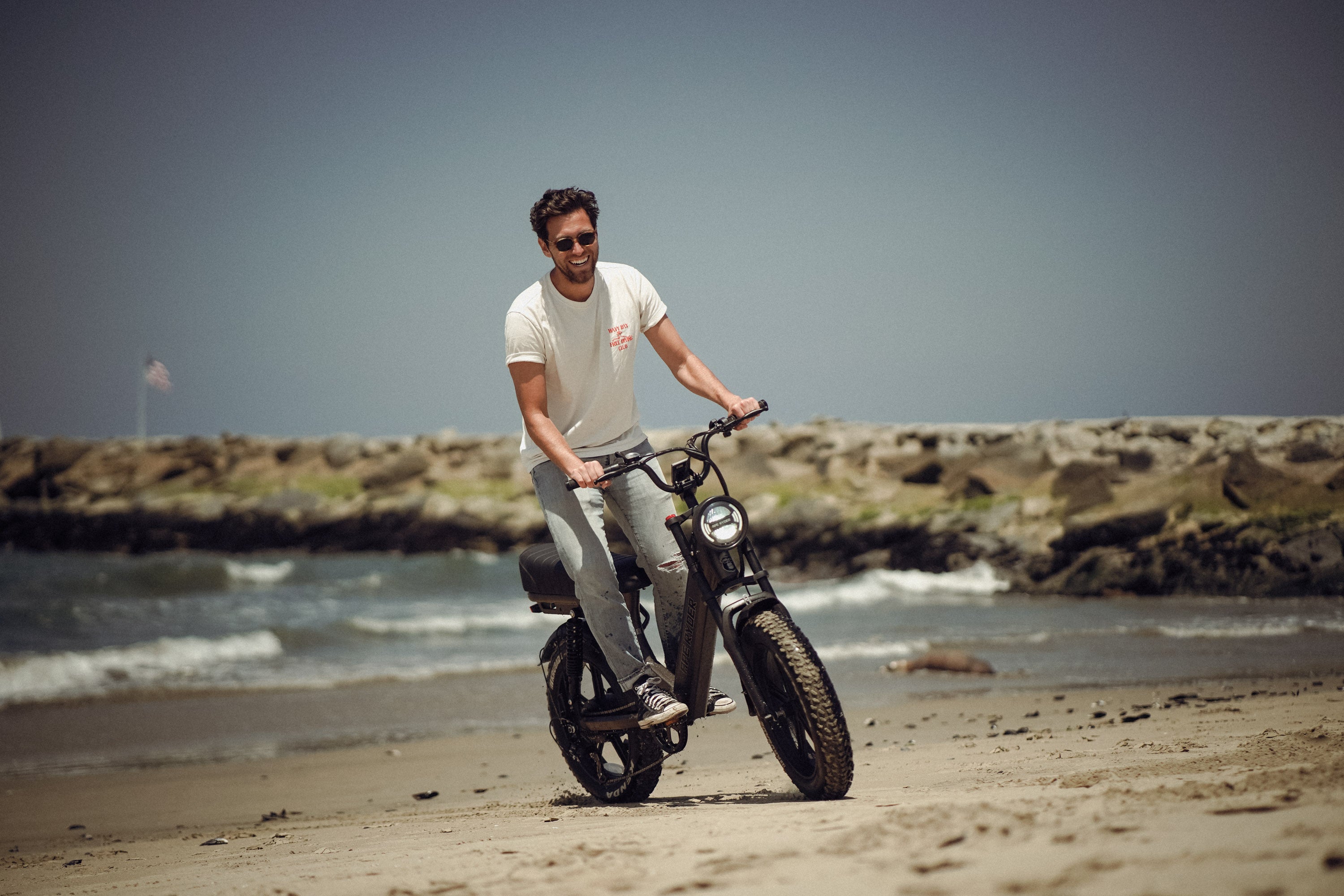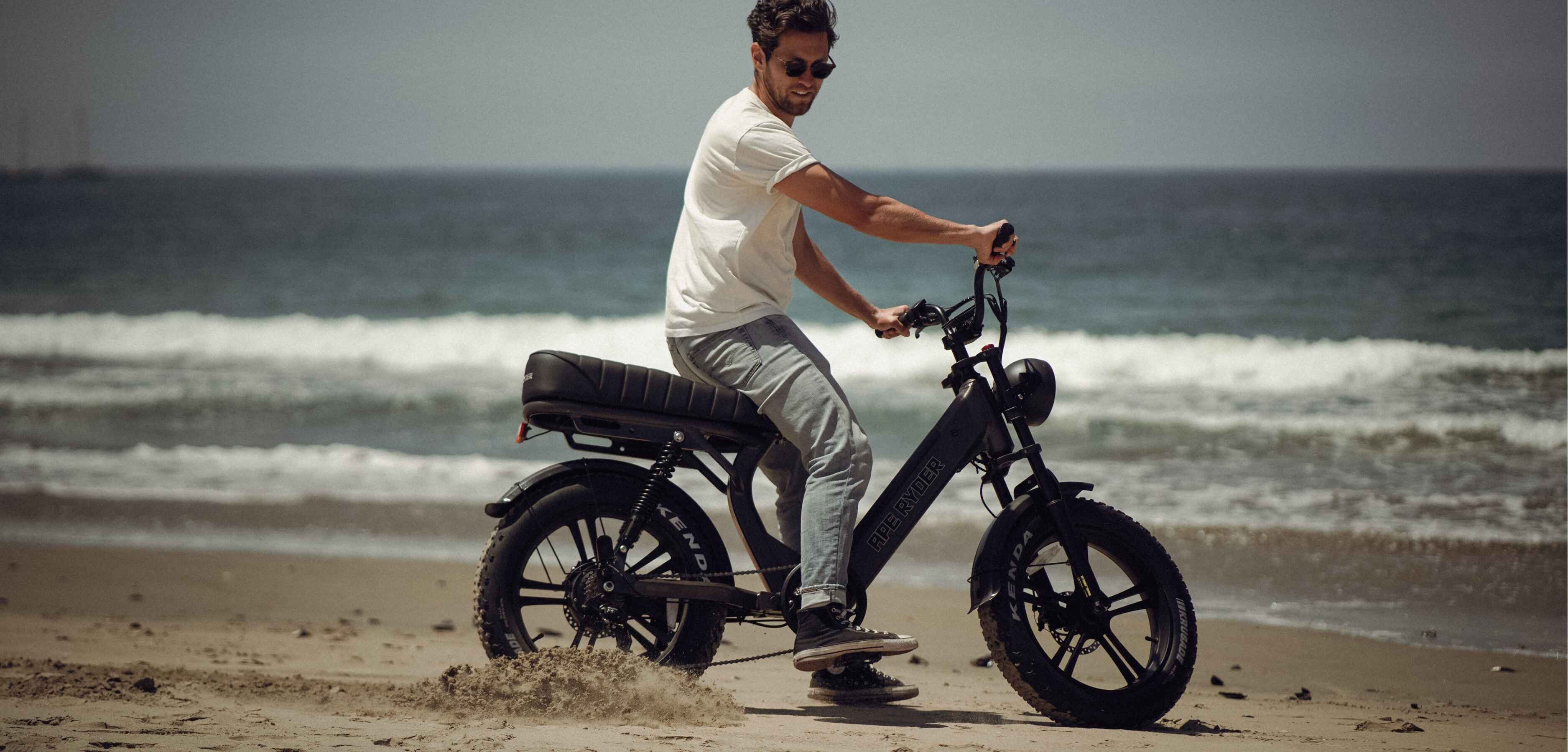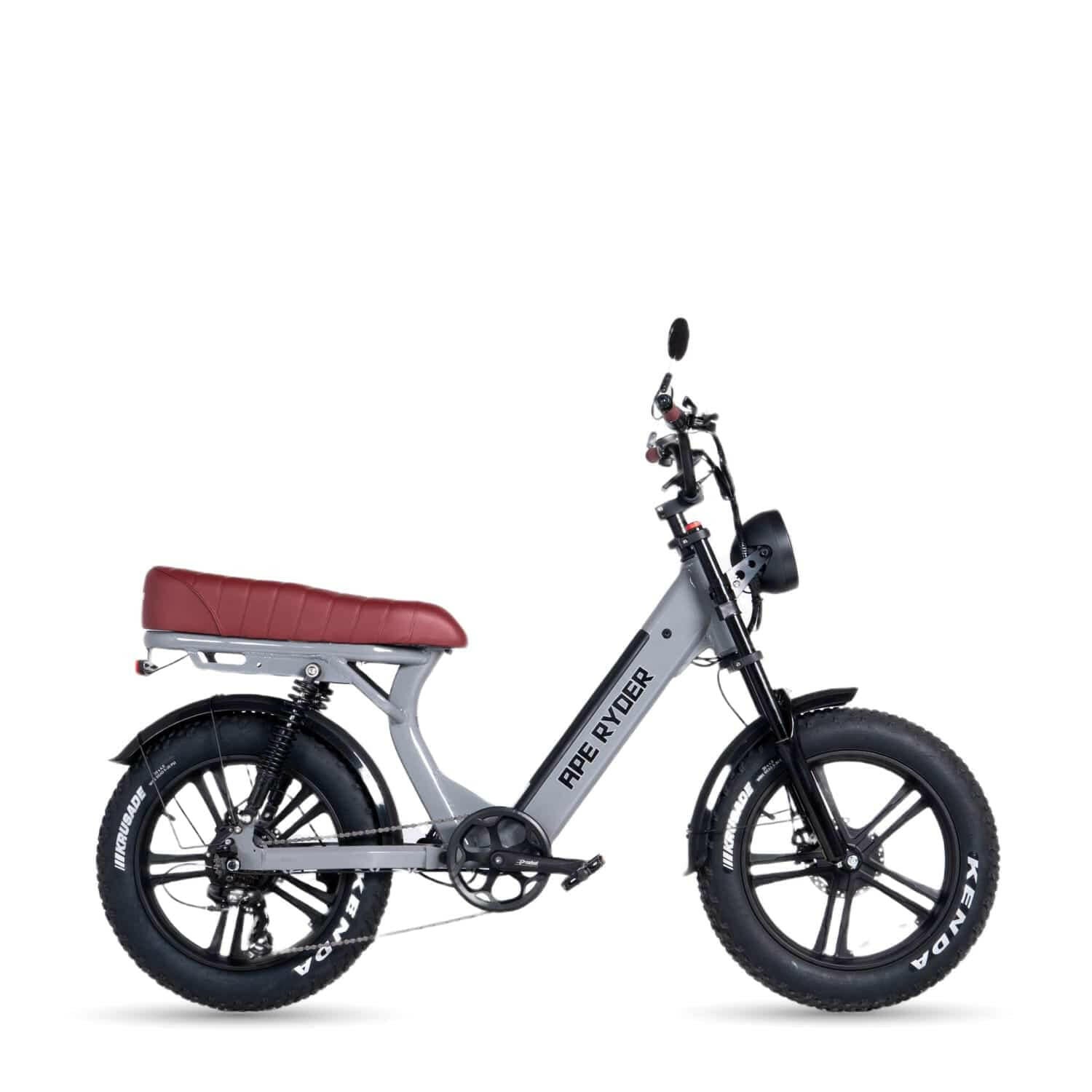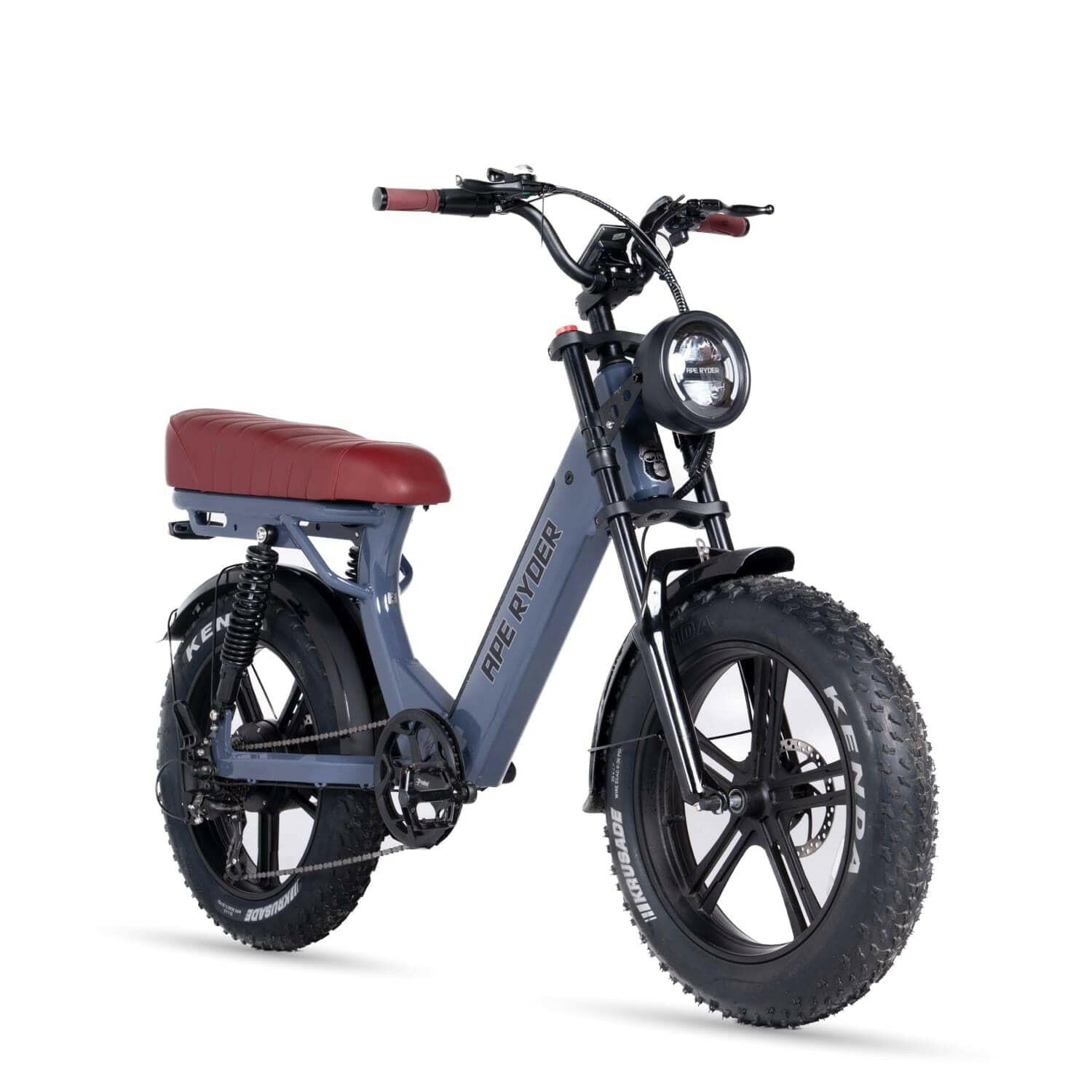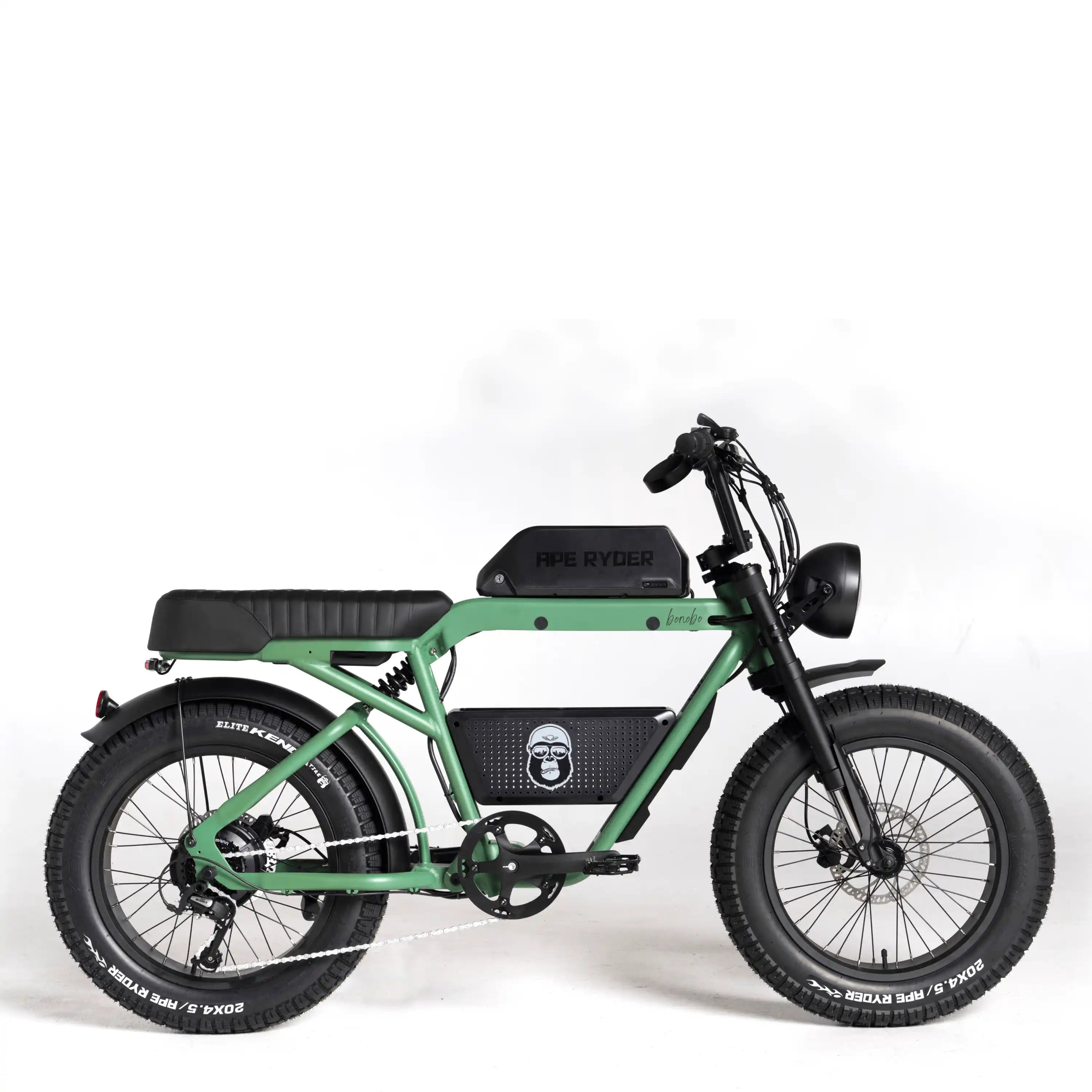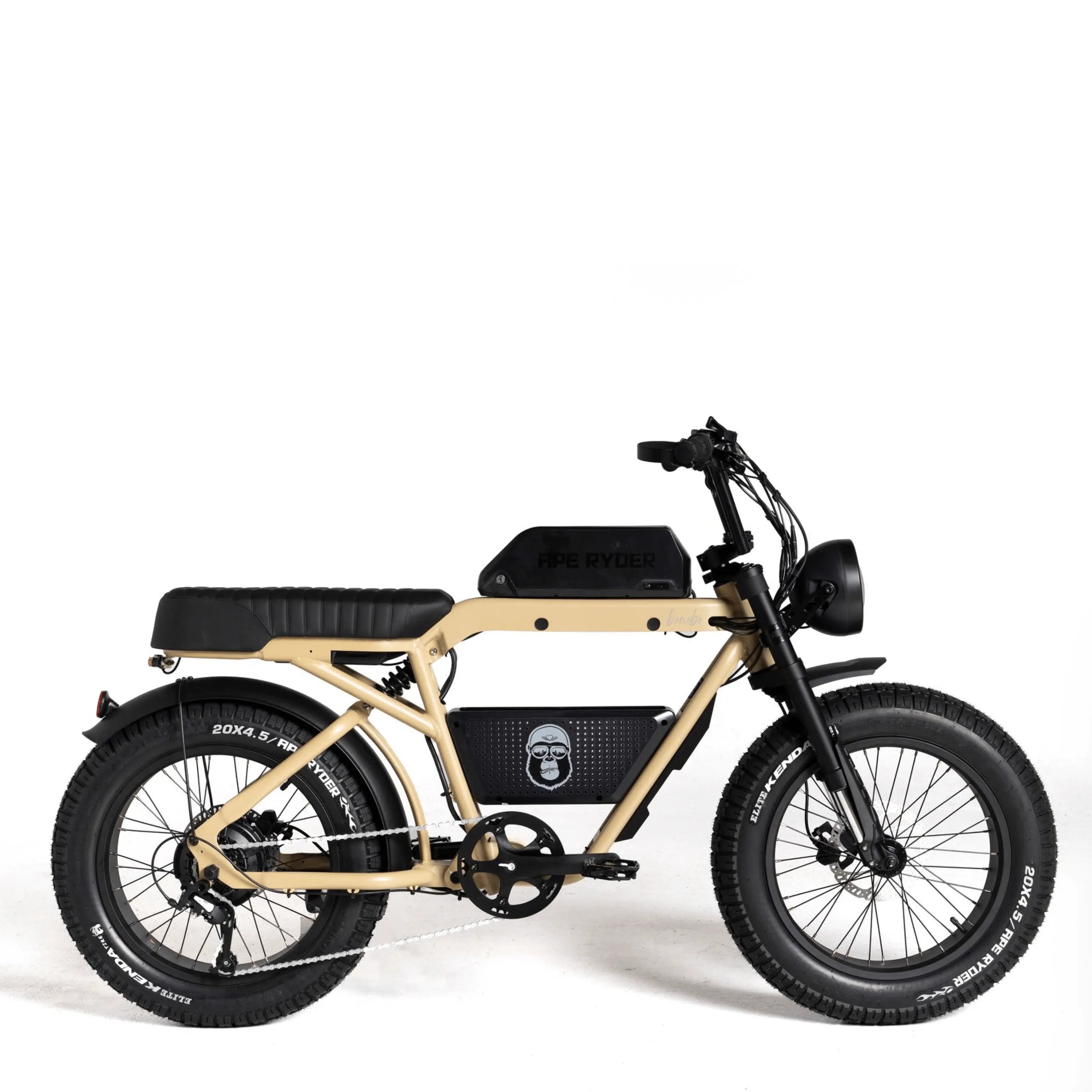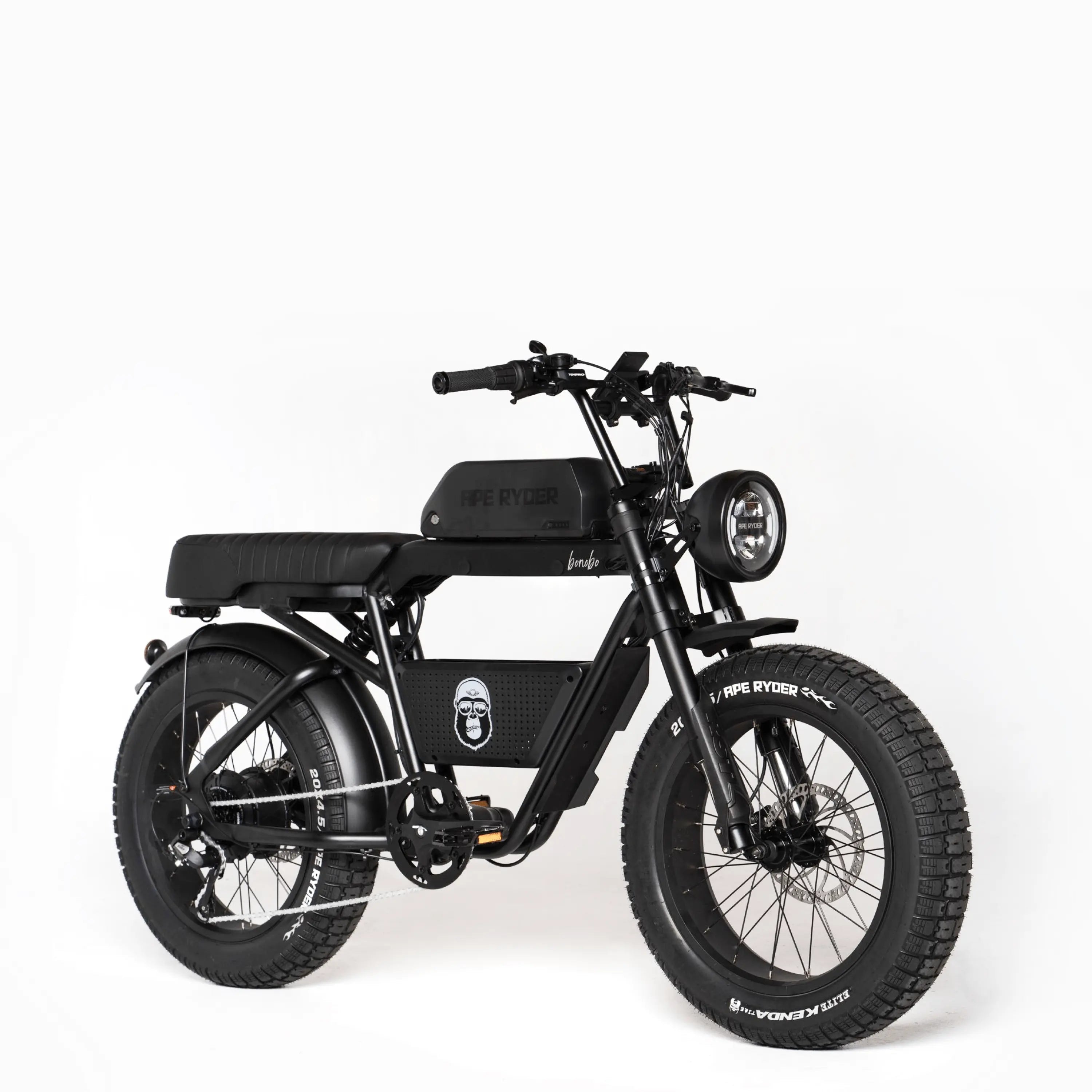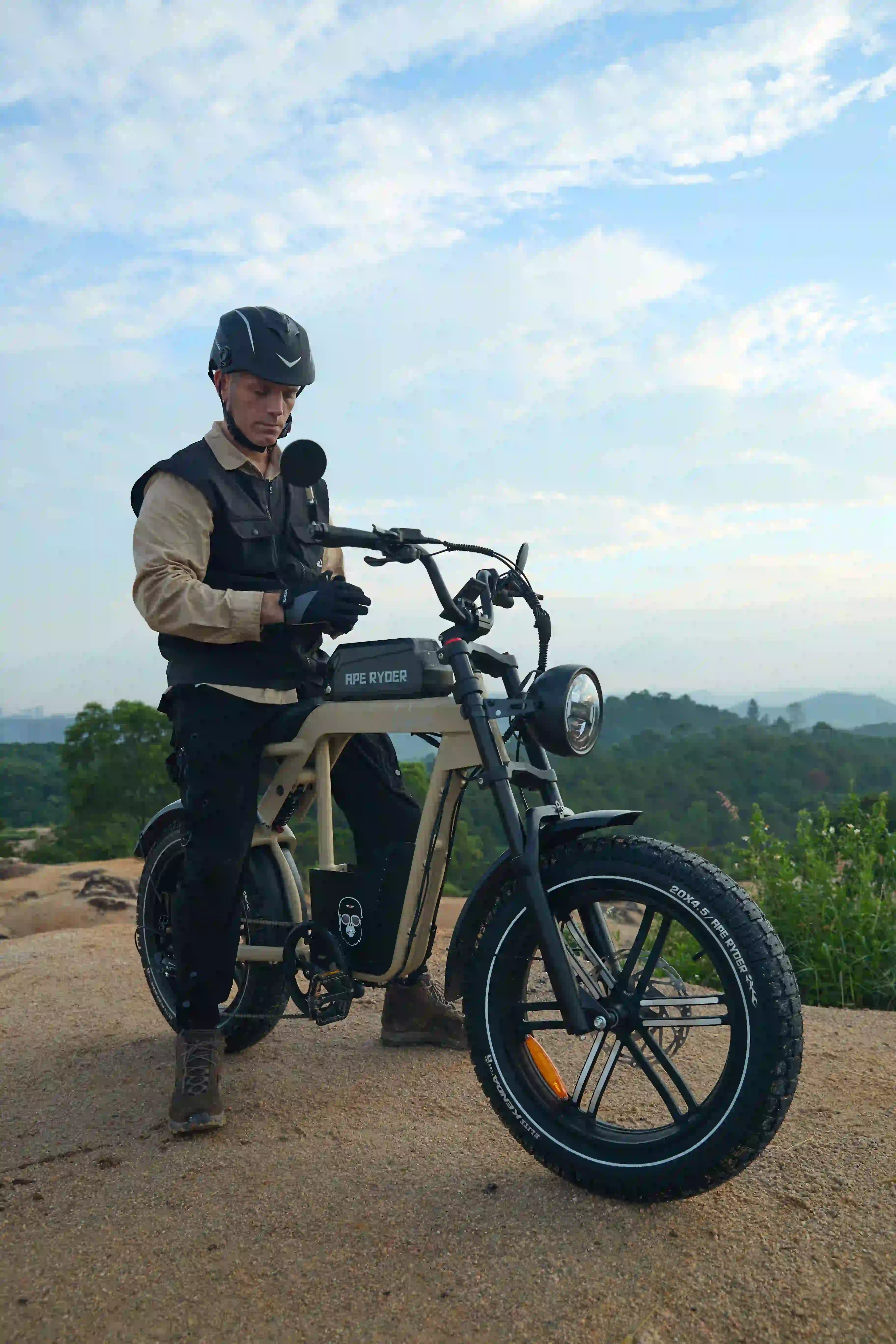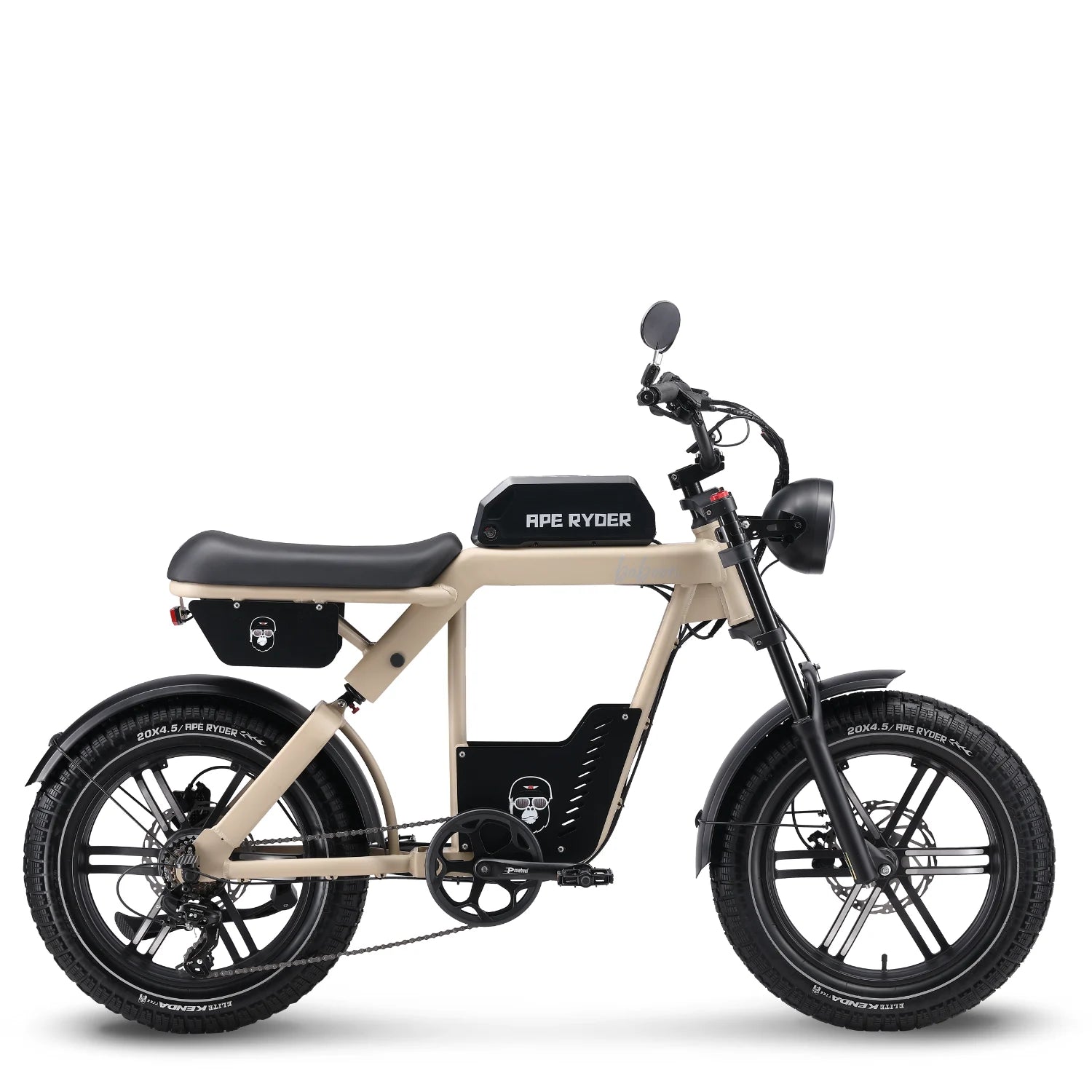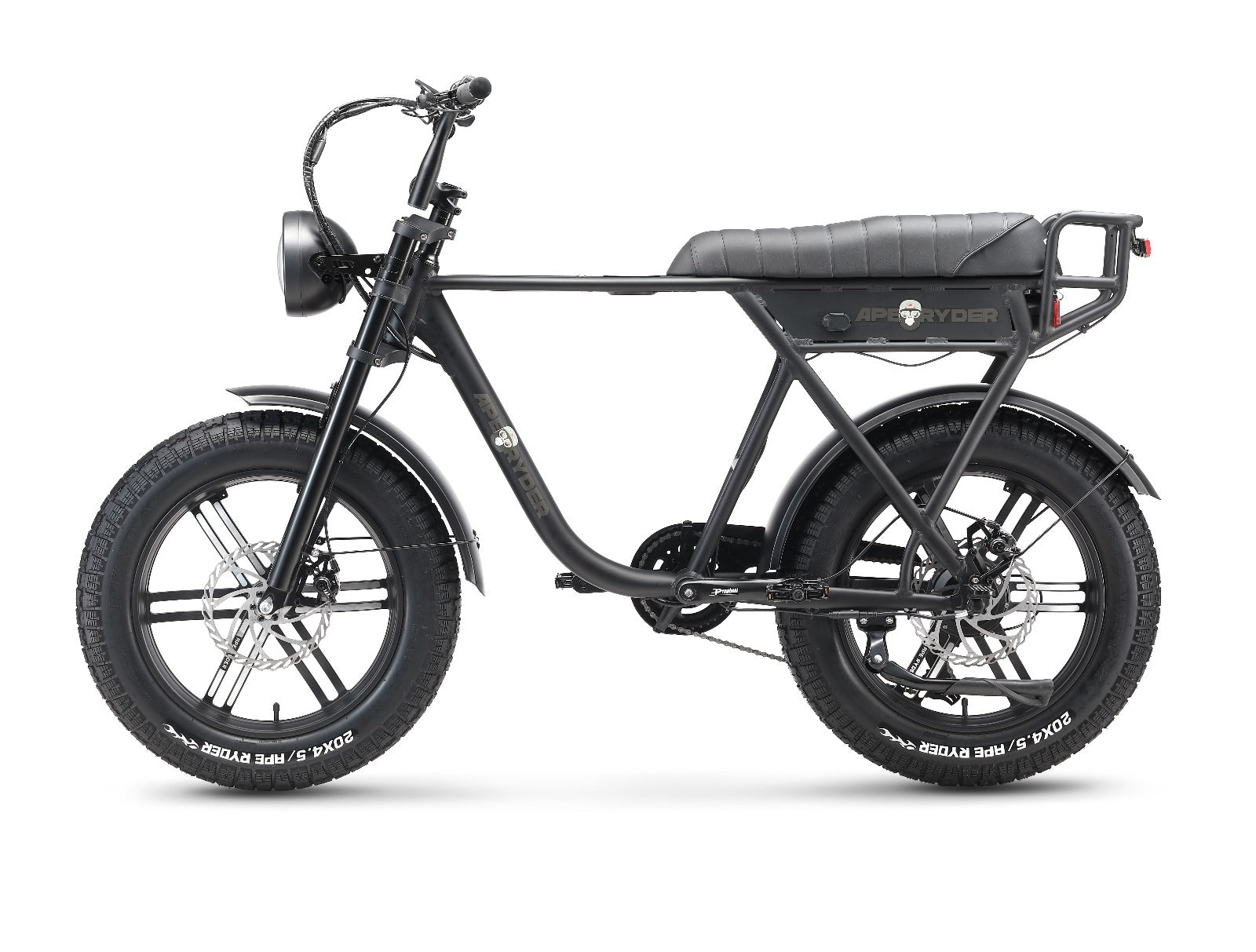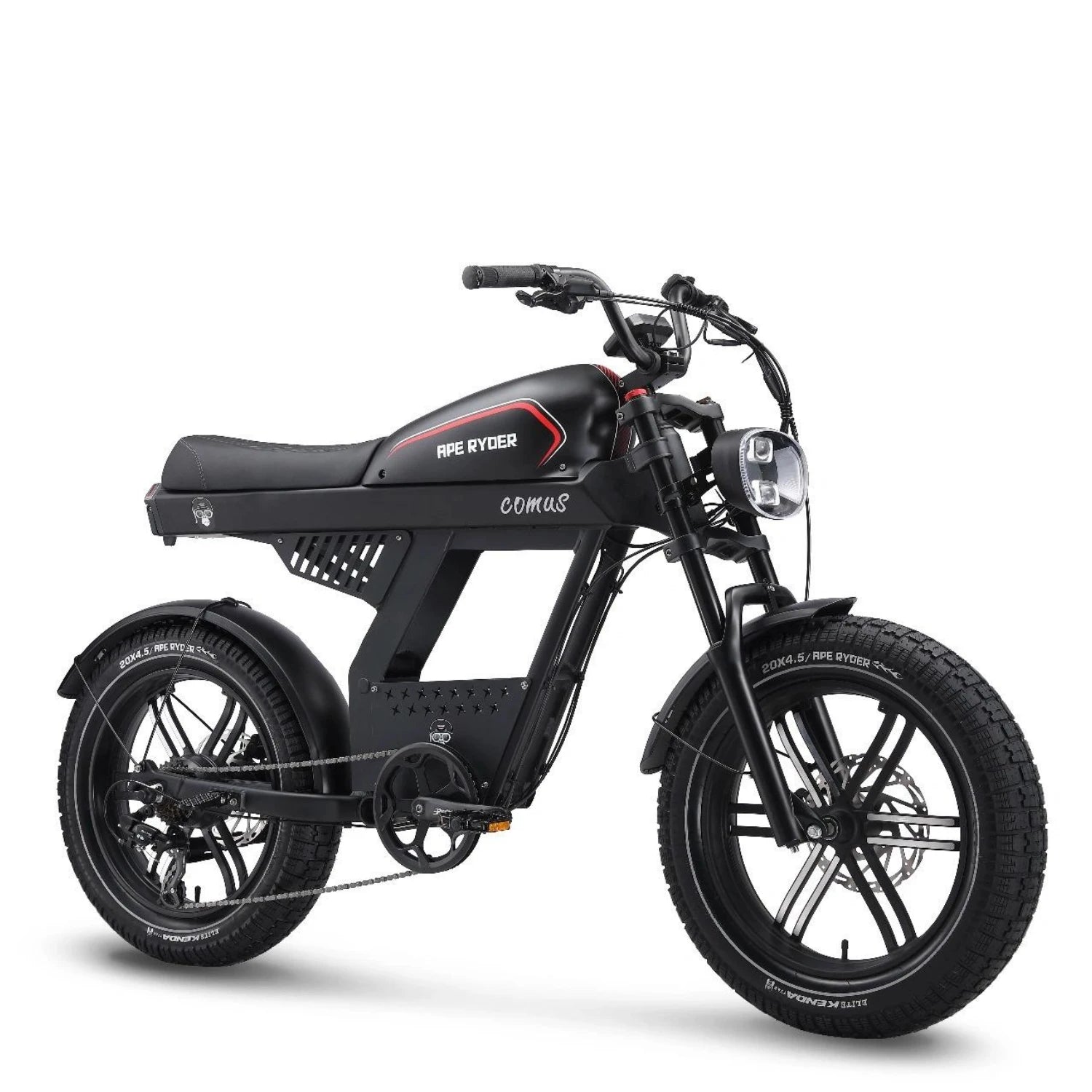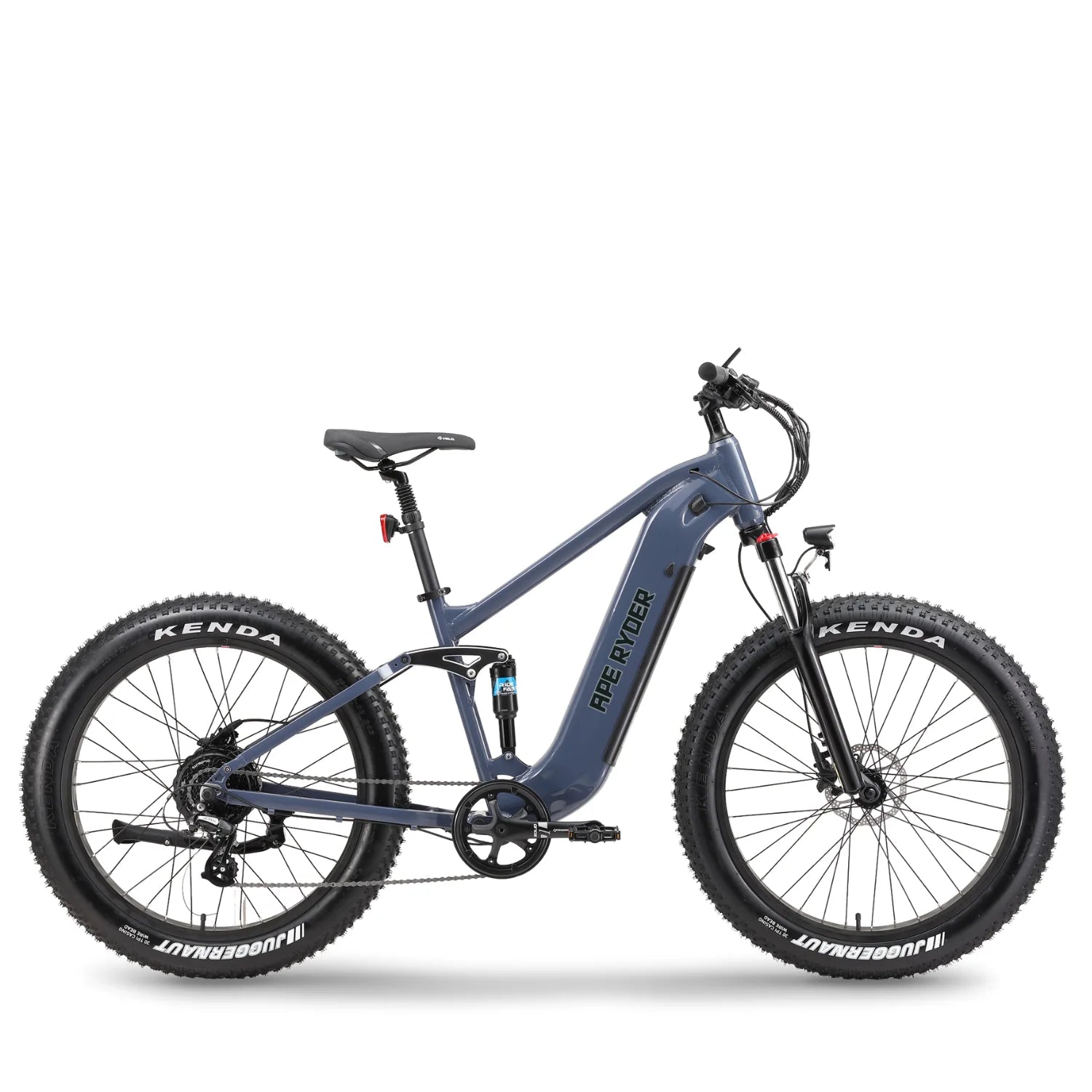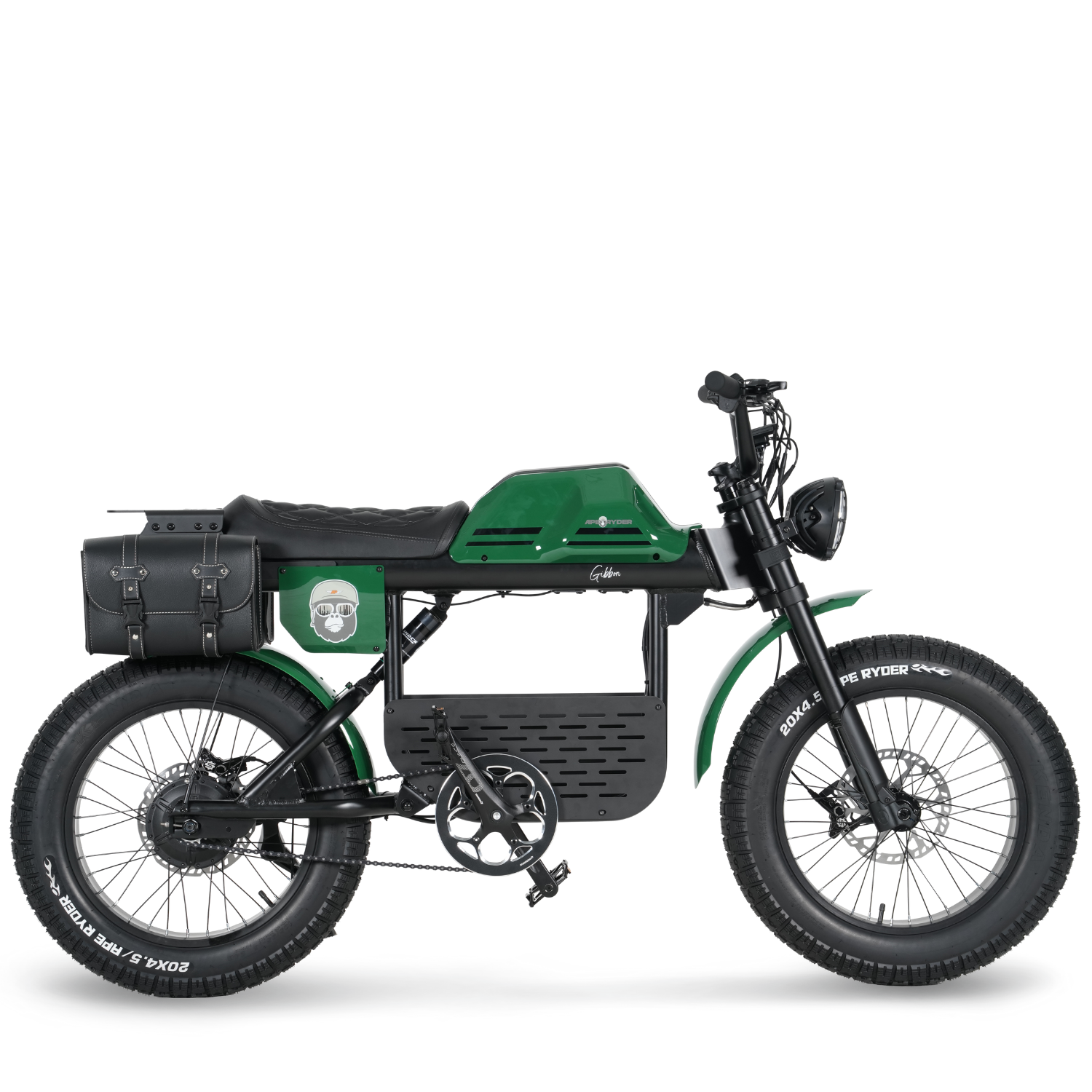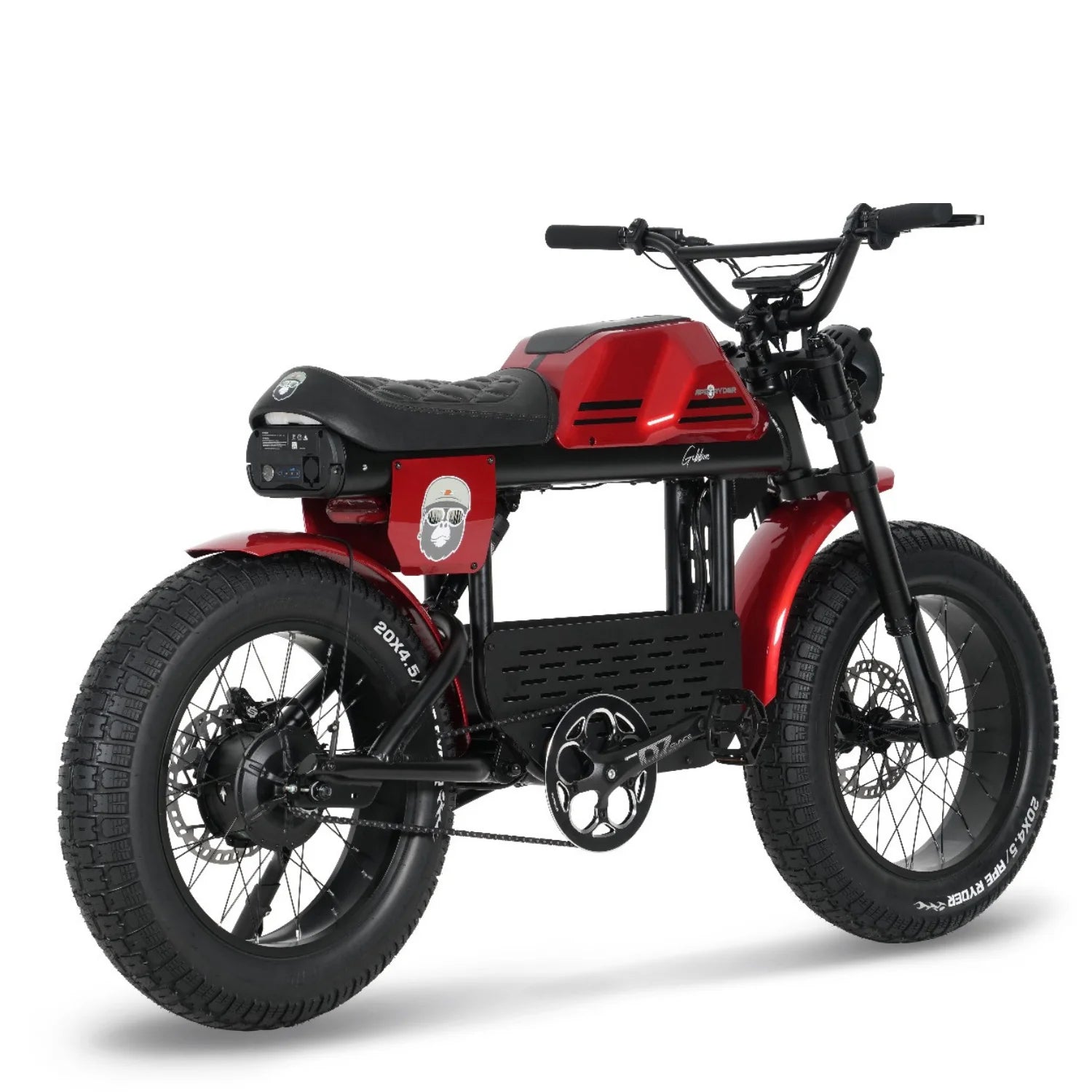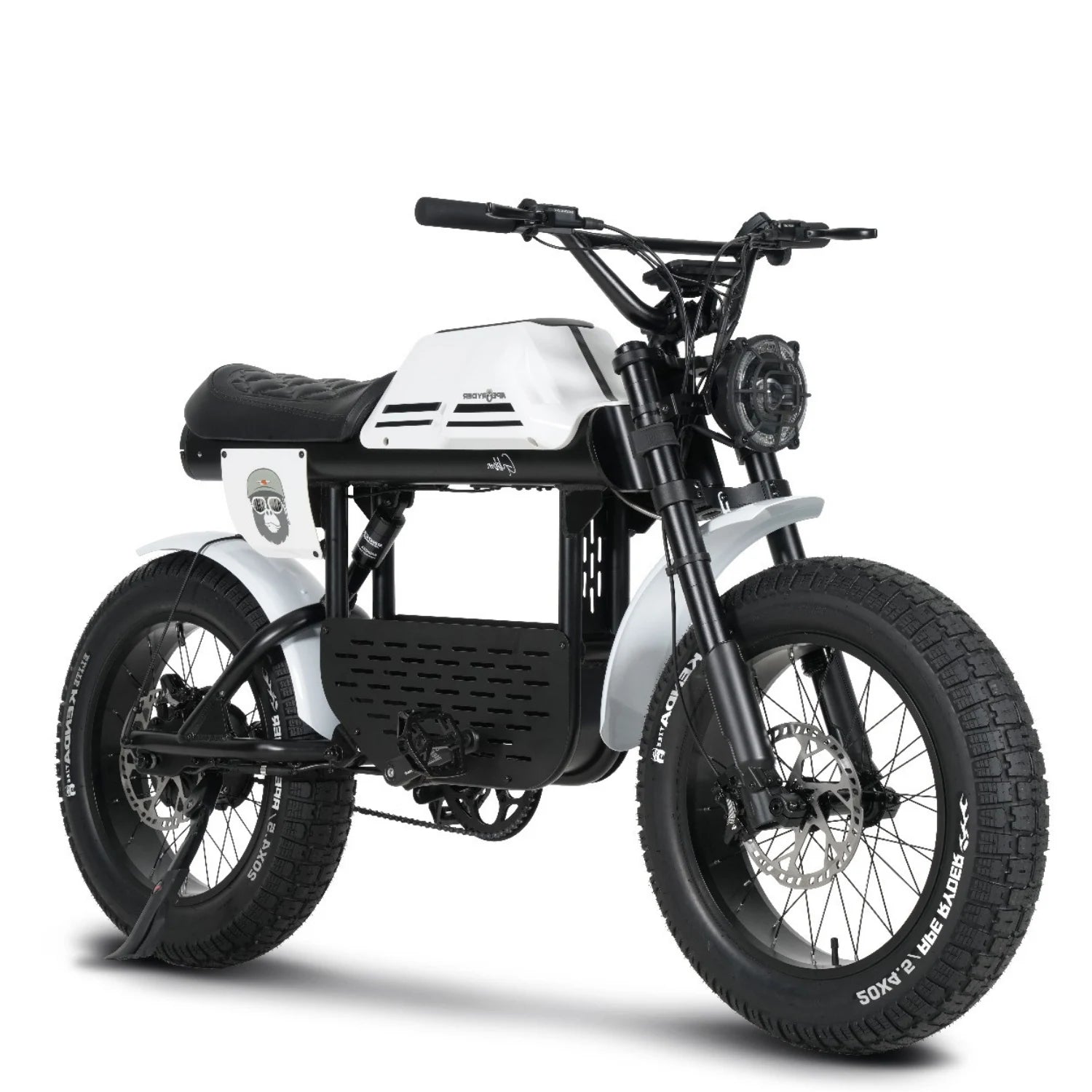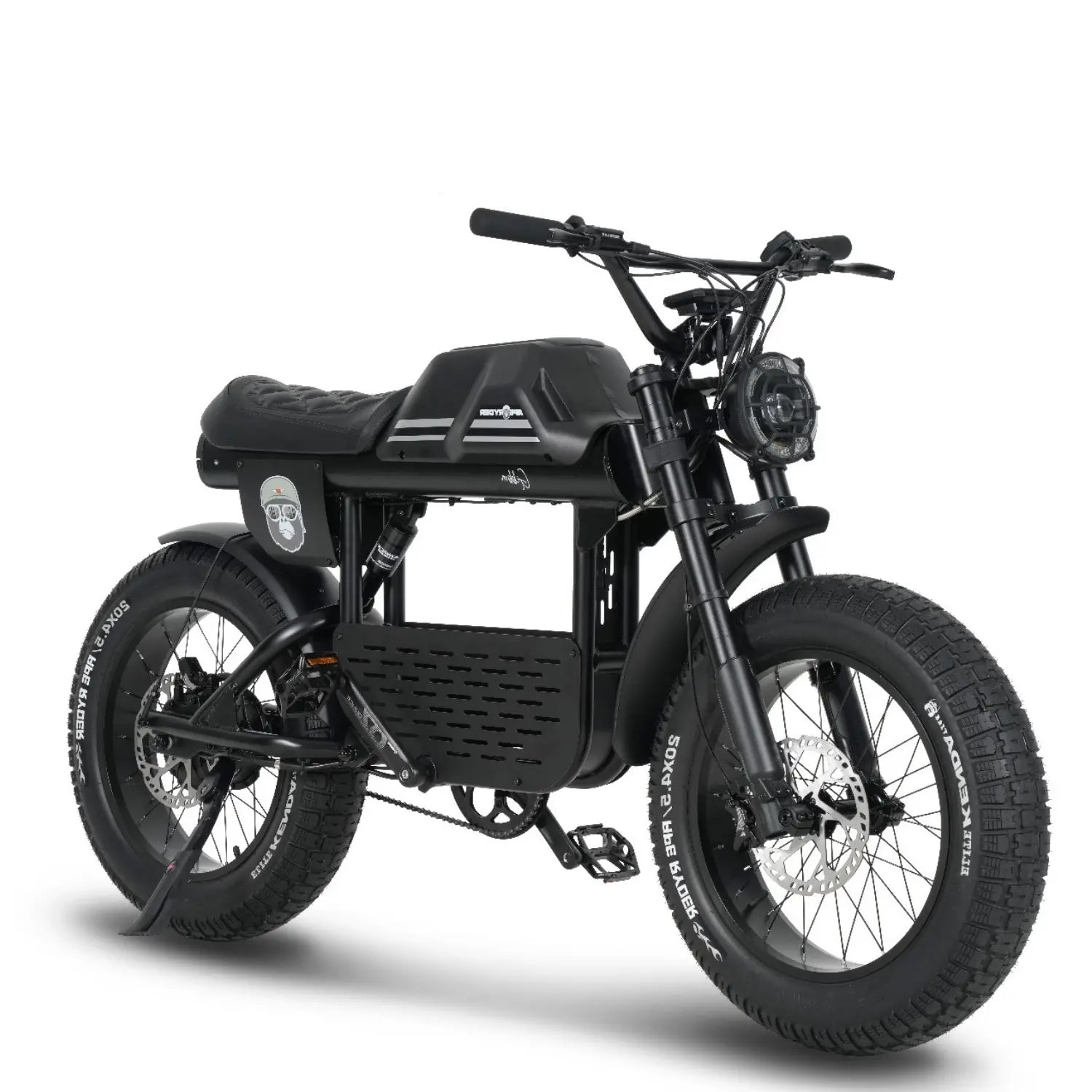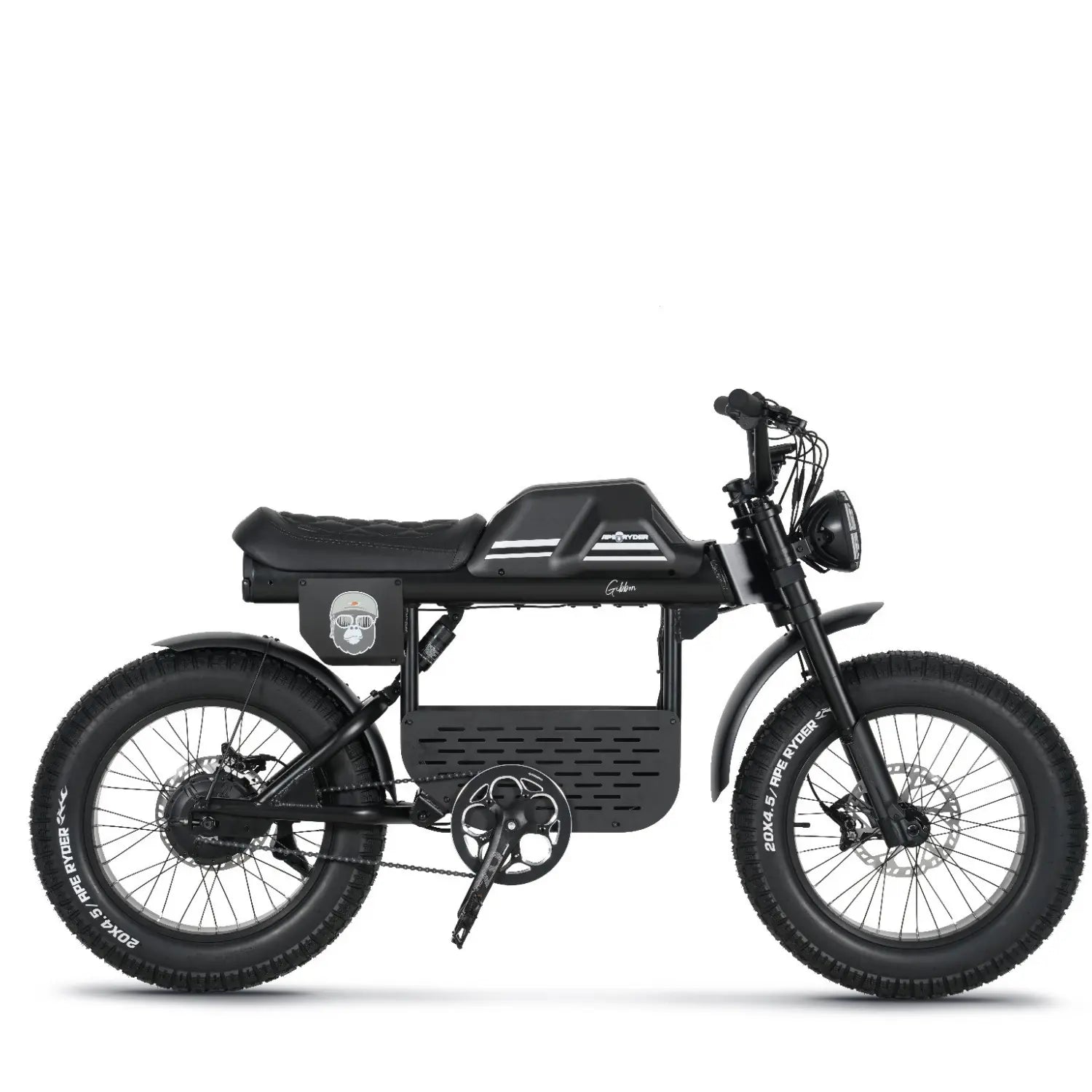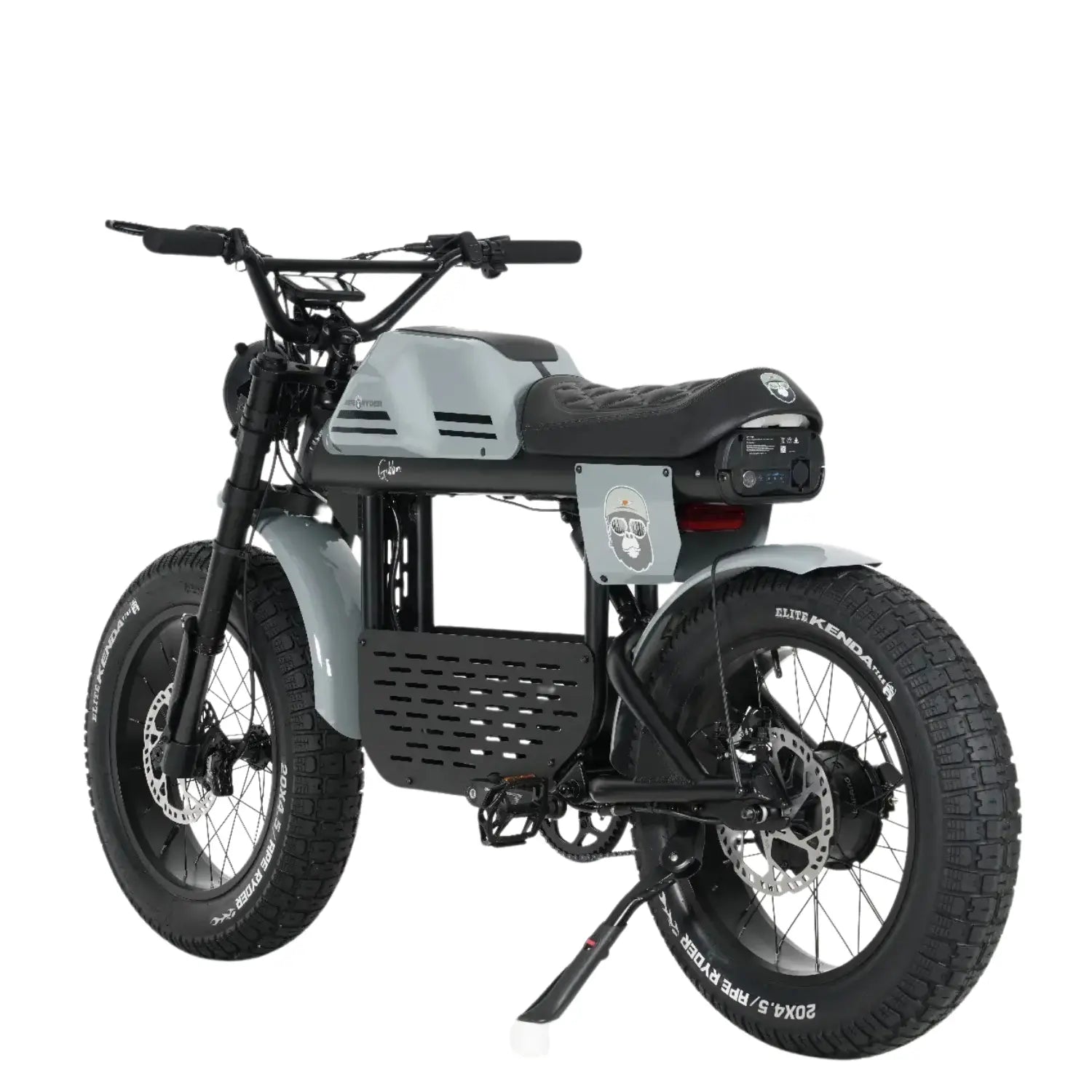Filters
18 products
What is a Fat Tire E-Bike?
Fat tire e-bikes are a revolutionary new category of electric bicycles that boast tires typically 3.8 inches wide or bigger. Such wider tires offer unparalleled traction and stability, hence ideal for off-road adventures, sandy beaches, snowy pathways, and rugged trails. The added boost of the electric motor makes uphill pedaling easier and steep terrains effortless to conquer on long distances with minimum strain.
Comparing Fat Tire E-Bike with Other Types of E-Bikes
Fat tire e-bikes stand out for their potential to manage complicated terrains easily. While regular e-bikes are much more suitable for urban commutes on asphalt, due to narrower tires, fat tire e-bikes can take up uneven and slippery surfaces. Mountain e-bikes are designed mainly for trails but sometimes don't offer comfort and performance on soft ground, such as sand or snow. A fat tire e-bike is designed for the utmost versatility and reliability on various terrains if one's cycling adventures take them off the beaten path.
Benefits of Fat Tire E-Bikes
Fat tire e-bikes handle anything from mountain trails and sandy beaches to snowy streets and even the urban environment. Their adaptability makes them appropriate for adventurers and casual riders alike. The extensive tires provide excellent grip and stability, consequently lowering the possibility of slipping away or dropping control even on rocky or muddy paths.
The tires are outsized, obviously going for walks like surprise absorbers to make the adventure smoother, even on unpaved roads. That makes them ideal for prolonged-distance journey across tough terrain. These e-bikes provide a sustainable transportation choice, producing zero emissions while decreasing the rider’s bodily stress as compared to conventional bicycles. Though there is an electric motor, riders can adjust the level of support provided by the e-bike to ensure a good workout; thus, it is very suitable for outdoor fitness.
Tips to Make Fat Tires Faster
Their recommended tire pressure will ensure the highest speed and efficiency. Bring your pedaling up to an optimum with a consistent rhythm to save energy for better acceleration. Upgrade to light components, such as carbon fiber handlebars, to lighten the weight of the bike and enhance the handling. Your riding position should be aerodynamic: lean forward, tucking in your elbows, to reduce drag. Regular maintenance, which includes cleaning the bike and lubricating moving parts, would ensure consistency in performance and longevity.
Pros and Cons of Fat Tire E-Bikes
Pros
• Increased Stability: The wide tires provide greater traction and stability over more ground, and this would surely be able to make them suitable for off-road conditions down to snowy surfaces. A bike with stability equates to the ability to give the rider a high level of confidence while riding it.
• Smoother Ride: Fat tires are way better with shock absorption; hence, they provide a much smoother and comfortable ride, especially on rough paths. Such comfort may be what an inexperienced rider or person who rides leisurely would want.
• Applications: The fat tire e-bike will be able to go through anything, from sand to mud, even snow, and much more. Such versatility would enable these to act within a wide frame of applications in riding. This in turn creates possibilities for exploration in variable environmental conditions.
• Better Control: Increased surface area amounts to increased control and maneuverability. Hence, lesser the chances of slipping, riders can feel much more secure tackling challenging trails or navigating through tricky urban settings.
Cons
• More Weight: Fat tire electric bikes are much heavier than other regular bikes, and that could reflect in handling and carrying the bike. That extra weight may make a difference in how high, or how far, you can easily lift or carry the bike.
• Higher Rolling Resistance: The wider the tire, the more drag there is; on pavement, that might lower speed and efficiency compared to thinner tires. Performance will vary depending on the terrain the riders are on.
• Price: The price of a fat tire e-bike may be a bit higher than that of any normal bicycle due to more specialized components and technology put into designing the bikes. The amount one invests is usually worth it if they ride frequently, but could be a factor in budgeting.
• Limited Speed: The larger tires, while designed for stability, sometimes hold back on acceleration and top speed on flat ground. This can help a rider understand this limitation and set practical expectations of their journeys.
How to Find the Best Fat Tire E-Bike?
First, one has to identify the needs for which he/she wants to purchase a fat tire e-bike and the kind of terrain that will be used. Consider tire width for stability, motor power-a minimum of 500 watts ideal for tough terrains-and battery capacity to be sure of sufficient range. A suspension system, such as front or full suspension, gives better comfort on rough surfaces. The use of high-quality materials, such as an aluminum or carbon fiber frame, ensures durability while keeping the bike lightweight.
Frequently Asked Questions (FAQs)
How much speed can be attained on a fat tire ebike?
Most electric bikes with fat tires have top-end speeds of around 20 to 28 miles per hour, give or take, contingent upon the make and regulatory specification of the area. Riders should also be aware of their local laws about e-bike speed limits.
How far can I travel on a single charge?
The range varies with the capacity of the battery, the terrain, and the amount of pedal assist used. You can expect an average of 20-60 miles, although some of the higher-end models give more than that.
How long does it take to charge the battery?
Some may take longer, but most of the fat tire e-bikes require around 4-6 hours to completely recharge their batteries. And as more models begin to offer fast-charging options, that time will continue to diminish further into the future for much greater convenience to the riders.
Are fat tire e-bikes heavy?
Yes, they tend to be heavier because the tires are way larger, and that battery weighs a lot. All of that weight is offset by the electric motor, of course, which makes the bike far easier to ride. For many riders, however, this weight increase is compensated for by the advantages of a fat tire electric bike.
Can I ride a fat tire e-bike in the rain?
Absolutely! Fat tire e-bikes are designed to ride through most weather conditions, including rain. However, you do want to check the manufacturer's guidelines for any specific recommendations regarding riding in wet conditions.
How do I maintain my fat tire e-bike?
Typical maintenance includes the following:
• Checking of tire pressure from time to time to ensure that it will operate optimally.
• Checking the wear and tear of brakes and their functionality.
• The battery must be charged correctly and be well cared for to advance the life of the battery.
• The bike should be cleaned after rides, especially after rides on tracks and off-road adventures that raise lots of dirt.
Is a fat tire e-bike suitable for commuting?
Of course! Stability and comfort, making them very apt for everyday commutes-they provide a super smooth ride, even on rugged city streets. The versatility will help you be ready for whatever commuting situation comes your way in life.
Can Fat E-Bikes Handle All Terrains?
Fat e-bikes are speculated to be advanced to maximum terrains and might be grouped as one of the extra flexible alternatives for the riders seeking adventure. The tires, being extra-extensive, provide them remarkable traction and stability that enables them to drift conveniently over rocky trails, sandy beaches, and even snowy paths. The extensive tire layout allows higher weight distribution, for this reason now not permitting the e-bike to sink into gentle surfaces including sand or snow. From across rough mountain paths, a cruise on the beach, or churning across icy streets, fat e-bikes answer for confident and fun rides for all those lovers of the outdoors.
How Wide Are the Tires on a Fat E-Bike?
Tires on fat e-bikes usually range from 4 to 5 inches wide. A width such as this creates a greater contact surface with the ground, increasing grip and stability on loose gravel, mud, and icy paths. It also makes negotiating obstacles such as tree roots and rocks far easier. The wide tires give not just balance but also a much-smooth ride by absorbing the jolts from the uneven terrain. This design feature is a game-changer, enabling riders to conquer challenging environments with minimal effort and maximum control.
Are Fat E-Bikes Suitable for Sand or Snow?
Fat e-bikes are great for sand and snow, where normal bikes struggle a lot. The wide tires distribute the weight of the rider evenly to prevent the bike from sinking in soft or uneven surfaces. On sand, fat e-bikes just glide over the surface with smooth, effortless, and enjoyable beach rides. In snowy conditions, the enhanced grip and stability ensure controlled rides even on slippery trails. These features make fat e-bikes suitable for winter expeditions, off-season beach adventures, or any kind of harsh terrain.
Do You Need a License to Ride a Fat Tire E-Bike?
In the vast majority of cases, fat tire e-bikes do not need a license to operate anywhere; they should just be within your local e-bike rules. Most of these rules limit wattage to 750W or less and speed to around 20 - 28 mph maximum, depending on the class. Fat tire e-bikes come into these limits, hence becoming accessible for most users without any special permissions. Laws may vary where you live, but it's always a good idea to check local regulations to make sure you're riding legally and safely.
Are Fat Tire E-Bikes Good for Commuting?
Fat tire e-bikes are excellent to use on commutes across rough roads, potholed, or in un-friendly weather conditions. Their wide tires and solid build provide a smooth, stable ride on bumpy or wet surfaces. Many have fenders, built-in lights, and cargo racks, which make them practical options for everyday transportation. Whether you’re navigating snowy streets or simply need a reliable bike for urban commutes, fat tire e-bikes offer comfort, durability, and confidence for every journey.
How Much Does a Fat E-Bike Cost?
Fat tire e-bikes range from about $1,000 to well over $3,000. Smaller models are relatively cheaper and ideal for Sunday-kind riders or novices. They have a few pretty naked bones abilties with a purpose to manipulate a smooth experience. Midsized options provide higher general ordinary overall performance thanks to increased battery life, upgraded suspension, and extra powerful automobiles, which makes them pretty flexible on greater difficult to experience surfaces and longer commutes. High magnificence fats e-bikes boast high-level components and advanced technology with hardy builds-desirable for the maximum extreme of journey seekers and overall performance-orientated riders. Whatever your budget or need may be, there's a fat e-bike designed to match it.
Can Fat E-Bikes Be Used for Mountain Biking?
It makes fat-tired e-bikes capable in mountain biking, with increased feelings of grip, stability, and durability. The tires provide a very wide level of shock absorption from rocky descents and loose gravel or uneven trails that lead to better control and comfort. Added motorized assistance brings ease in steep climbs due to that much-needed power. This kind of fat e-bike acts like a reliable companion for technical trail tackling and off-beat track rides that can promise adventure and performance combined for mountain bikers.
Are Fat Tire E-Bikes Suitable for Beginners?
Fat tire e-bikes are great for novices, offering much stability and ease of use. Wide tires provide an extremely forgiving ride that lets new riders build confidence on the most challenging surfaces like sand, snow, or gravel. Electric assistance lets the beginning rider master hills or longer rides with much less fatigue, so it can be more enjoyable. The strong design further offers safety and comfort, which would make it easy for any new rider to learn basic maneuvers while comfortable on the bike.
How Do You Maintain a Fat Tire E-Bike?
Maintenance for a fat tire e-bike is relatively simple but important in making it continue performing well over a long period. The tire pressure should be checked regularly for optimum efficiency and handling. Cleaning of the drivetrain, chain, and gears after each off-road ride helps to clear dirt and debris. Let the battery rest in a cool, dry place and charge correctly to maintain life. Brake, gear, and suspension components also need to be checked for wear and replaced when needed. Periodic professional tune-ups will also maintain your e-bike at its optimum for a smooth and reliable ride.
Are Fat Tire E-Bikes Comfortable to Ride?
Fat tire e-bikes have become synonymous with comfort for long-distance riding and on uneven terrain. The broad tires, together with the added suspension system in most cases, absorb the shocks and vibrations; hence, even the most irregular paths turn out to be like a stroll. Many models offer padded saddles, ergonomic handlebars, and a range of adjustment options for further comfort. Fat e-bikes cushion the bumps-maybe your commute, adventure, or just a bike ride over whatever kind of terrain.
Can Fat Tire E-Bikes Carry Cargo?
The usual nature of fat tire e-bikes makes them flexible and capable of carry shipment. Most of the fashions have in-built racks, panniers, or trailer attachments with a purpose to provide carriage of groceries, tenting tools, or another crucial commodity pretty effects. The giant tires and a strong body make sure stability despite greater weight aboard. These fats-tire e-bikes take every the rider and his shipment successfully and without problems: to run errands, for an prolonged revel in, or out to clearly just have an adventure.






